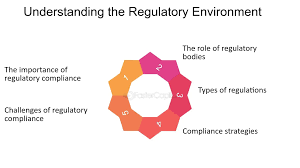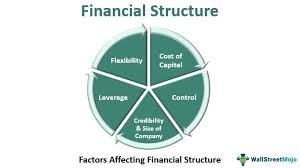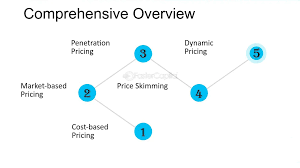The Transition from Government to Private Construction: Lessons Learned
The construction industry is vast and varied, with significant differences between government and private sector projects. Many contractors who start their careers working on government projects eventually move into the private construction sector. This transition can be both rewarding and challenging, as the two sectors have distinct requirements, expectations, and workflows. At Carry Construction, we’ve experienced this shift and have gathered valuable lessons along the way that can help others in the industry navigate the journey more effectively.
1. Understanding the Difference in Project Scope and Flexibility

Government Projects:
Government construction projects tend to be large-scale, such as highways, public buildings, or infrastructure upgrades. These projects are typically rigid in terms of scope, as they must follow strict guidelines, regulations, and budget constraints. Any changes to the scope must go through lengthy approval processes, making flexibility minimal.
Private Projects:
In contrast, private sector projects can be more varied in size and scope, ranging from small renovations to large commercial developments. Private clients often expect a more dynamic approach, with changes in design and scope happening frequently. Flexibility is crucial, and contractors need to be adept at adapting to evolving client demands without losing control over costs and timelines.
Lesson Learned: Transitioning from government to private construction requires learning to be more agile and responsive to client needs. Private sector projects may offer more freedom, but this comes with the responsibility of effectively managing scope changes and client expectations.
2. Adapting to Different Compliance and Regulatory Environments

Government Projects:
Government contracts come with strict adherence to regulations, standards, and compliance checks. These projects are often closely monitored, with regular audits to ensure adherence to safety standards, environmental regulations, and legal requirements. Contractors working on government projects are familiar with these processes and know how to navigate them.
Private Projects:
While the private sector also has compliance requirements, the level of scrutiny can vary depending on the project and the client. Some private clients may be more relaxed about regulations, while others, particularly in high-end commercial or industrial projects, may demand the same or even higher standards than government jobs. Contractors need to ensure they stay on top of legal requirements even when clients may push for faster, cheaper solutions.
Lesson Learned: It’s essential to maintain a strong focus on compliance and quality, even in private sector projects where regulations may seem more relaxed. Cutting corners can lead to future problems, both legally and reputationally.
3. Managing Client Relationships and Expectations

Government Projects:
In government construction, the project specifications are usually fixed, and client interaction tends to be minimal after the contract is awarded. There’s a clear chain of command, and communication is often formal and bureaucratic. While this can make the process slower, it also reduces the need for constant client engagement.
Private Projects:
In the private sector, client relationships are everything. You are not just working with a set of specifications but with people who have specific goals, visions, and expectations. Clients may want more frequent updates, greater involvement in decision-making, and a higher level of customization. Managing these relationships effectively is crucial for success.
Lesson Learned: The private sector demands a more hands-on, personal approach to client management. Contractors must excel in communication, building trust, and keeping clients informed every step of the way to ensure satisfaction.
4. Financial Management and Payment Structures

Government Projects:
One of the benefits of working with the government is the relative security of payment. Although payment cycles can be slow due to bureaucratic processes, contractors can usually rely on guaranteed payments once the project is complete. Government contracts often come with detailed payment schedules and clear milestones.
Private Projects:
In the private sector, payment schedules can vary significantly. Clients may offer more flexible payment terms, but there’s also a higher risk of late or missed payments. Contractors need to be proactive about managing cash flow and ensuring that payment terms are clearly defined in contracts.
Lesson Learned: Financial risk management becomes more important in the private sector. Establishing clear payment terms, requiring deposits, and maintaining a solid cash flow strategy are essential for success.
5. Navigating Competitive Pricing and Profit Margins

Government Projects:
Government contracts are often awarded based on a competitive bidding process, with the lowest bid frequently winning the contract. While this can guarantee work, it also puts pressure on contractors to keep prices low, sometimes at the expense of profit margins.
Private Projects:
In the private sector, while competition is still a factor, pricing is often more flexible. Contractors have the opportunity to negotiate based on their expertise, reputation, and the value they bring to the project. However, private clients expect a high level of quality and efficiency, meaning contractors must find the right balance between competitive pricing and maintaining healthy profit margins.
Lesson Learned: Contractors transitioning to the private sector should focus on value-based pricing rather than simply competing on cost. Building a reputation for high-quality work can help justify higher rates and lead to better profit margins.
6. Embracing Innovation and Technology

Government Projects:
Government projects often have slower adoption rates for new technologies and construction methods due to bureaucratic processes. Innovation can be limited by strict specifications, leaving little room for creativity.
Private Projects:
In the private sector, innovation is often encouraged and even expected. Clients may want the latest in construction technology, sustainability solutions, or modern design trends. Contractors can embrace new tools, techniques, and technologies to enhance project efficiency, improve quality, and differentiate themselves from the competition.
Lesson Learned: Transitioning to the private sector opens up opportunities for innovation. Contractors should be prepared to invest in new technologies, train their teams, and stay ahead of industry trends to remain competitive.
Conclusion: Lessons for a Successful Transition
Moving from government to private construction can be a rewarding shift for contractors, offering greater flexibility, a wider variety of projects, and potentially higher profit margins. However, it also requires a new approach to client management, financial planning, and adaptability. The lessons learned from working in government projects—such as a focus on quality, compliance, and careful planning—are still valuable, but contractors must also embrace the dynamic nature of the private sector.
At Carry Construction, we’ve learned that success in the private sector requires a blend of the best practices from both worlds. By maintaining high standards, staying adaptable, and focusing on building strong client relationships, contractors can thrive in both sectors and take their businesses to new heights.











Add comment